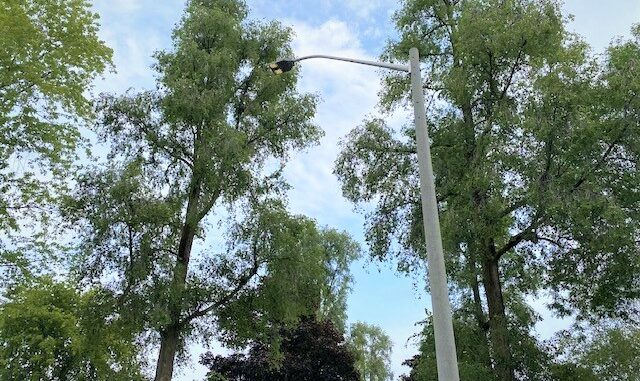
Mississauga is home to approximately 2.1 million trees, with more than 200 species. Trees range from coniferous, deciduous, flowering and fruit trees. You may have heard of oak and maple trees, but Mississauga is also home to some rare tree species too.
While walking around in Mississauga’s parks and neighbourhoods, see if you can spot one of these rare trees.
Sassafras
This beautiful native tree has three unique leaf shapes on a single tree. The flowers are small and yellow, and the fruit is dark blue on a red stalk. It’s a source of food for birds. All parts of the plant have a spicy odour when bruised. This tree is native to the Carolinian forests of southern Ontario. You can find sassafras trees in the south end of Mississauga in Hancock Woodlands.
Elms
Mississauga is home to 20 large, siberian elm cultivars in the Park Royal neighbourhood. While siberian elms are considered a non-native invasive species and are found throughout the city, the Park Royal elms were developed specially for the site and are believed to be the only remaining ones in Mississauga. In more than 50 years, these large trees have grown to be very impressive in size, despite difficult growing conditions. Many of these trees are more than 24 metres tall, and have impressively long and straight trunks. These are rare trees and can be found on the following streets: Padstow Crescent, Bonner Road and Lewisham Drive.
This tree is named after its greyish bark that starts to “shag” off in vertical strips, peeling away from the trunk on one or both ends as the tree ages. It has a sweet-tasting hickory nut that squirrels, chipmunks and birds eat. Shagbark hickories are a less common species in southern Ontario and can be found in several groves throughout Mississauga at Bidwell Trail Common, Deer Run, Dr. Martin L. Dobkin Community Park, Erin Woods and Windrush Woods.
Mississauga’s tree map
The City has a tree map where you can look up City-owned trees on street boulevards and in parks. Search your address to find trees near you. It shows the species of the tree, its diameter and more information on the species of the tree. The City also has a Fantastic Trees program where you can nominate a tree based on age, size, species, unique shape, location on the landscape or value to wildlife. You can also view the interactive map to learn more about these trees.
For more information about Mississauga’s trees, visit mississauga.ca/trees.
SOURCE City of Mississauga

Leave a Reply